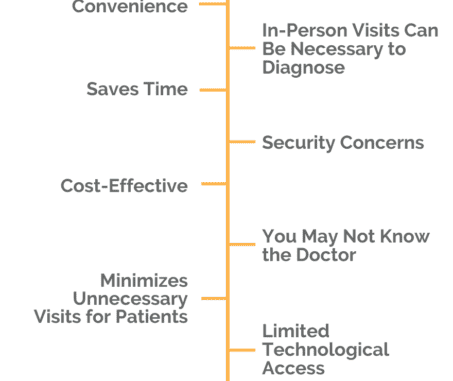
Telemedicine, also known as telehealth or virtual care, has been on the rise in recent years. With advancements in technology, more and more healthcare providers are turning to telemedicine to provide remote medical care to patients. While there are many benefits to telemedicine, there are also some drawbacks to consider.
Pros of Telemedicine
Convenience
One of the biggest advantages of telemedicine is the convenience it offers to both patients and healthcare providers. Patients can receive medical care from the comfort of their own homes, saving time and money on travel expenses. Healthcare providers can also see more patients in a day by conducting virtual appointments, leading to increased efficiency in their practice.
Accessibility
Telemedicine allows patients in remote or underserved areas to access healthcare services that they may not have otherwise been able to receive. This is especially beneficial for individuals who live far away from healthcare facilities or have limited mobility.
Cost-Effectiveness
Telemedicine can be more cost-effective for both patients and healthcare providers. Patients save money on transportation costs and time off work, while healthcare providers can reduce overhead expenses associated with running a physical office.
Improved Quality of Care
Studies have shown that telemedicine can lead to improved outcomes for patients, as they are more likely to adhere to their treatment plans and follow-up appointments. By monitoring patients remotely, healthcare providers can intervene early if there are any issues, leading to better overall health outcomes.
Cons of Telemedicine
Lack of In-Person Interaction
One of the main drawbacks of telemedicine is the lack of in-person interaction between patients and healthcare providers. Some patients may feel more comfortable discussing sensitive medical issues face-to-face, and healthcare providers may find it challenging to provide a thorough examination without physically seeing the patient.
Technological Barriers
Not everyone has access to the technology required for telemedicine, such as a reliable internet connection or a smartphone. This can create disparities in healthcare access for individuals who are not tech-savvy or cannot afford the necessary equipment.
Security and Privacy Concerns
There are also concerns about the security and privacy of patient information transmitted through telemedicine platforms. Healthcare providers must ensure that they are using secure, encrypted technology to protect patient data from cyber threats.
Licensing and Reimbursement Challenges
Telemedicine is subject to regulations and licensing requirements that vary by state, which can create challenges for healthcare providers looking to offer virtual care across state lines. Additionally, reimbursement policies for telemedicine services can be complex and may not always align with traditional in-person visits.
Conclusion
Despite some challenges, the rise of telemedicine offers numerous benefits for both patients and healthcare providers. As technology continues to advance, telemedicine is likely to become an increasingly integral part of the healthcare system. By weighing the pros and cons of telemedicine, healthcare providers can make informed decisions about how to best incorporate virtual care into their practice.
